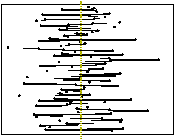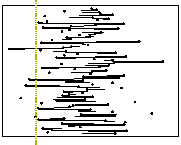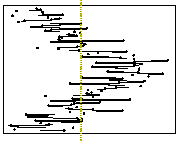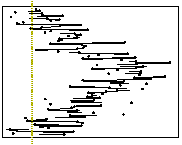There are two basic types of capability measures: long-term (LT) and short-term (ST).
LT means that the process has had ample opportunity to exhibit typical shifts and drifts, cyclical patterns, and opportunities for special causes of variation. LT is meant to measure how the process actually performs over a long period of time in the presence of shifts, drifts, cyclical patterns, special causes, and so on.
ST means that the process is devoid of those characteristics. ST is meant to measure the potential capability of the process if the process were performing at its absolute best.
A process has four possible states or conditions, as described in the following sections. When you calculate ST capability statistics or indices, use condition A. When you calculate LT capability statistics and indices, use condition D.
Condition A
- The process is centered on target.
- The process does not exhibit shift or drift.
- The process does not exhibit dynamic patterns.

Condition B
- The process is not centered on target. That is, the process shifted.
- The process does not exhibit drift.
- Process does not exhibit dynamic patterns.

Condition C
- The process is centered on target.
- The process exhibits drift.
- The process exhibits dynamic patterns.

Condition D
- The process is not centered on target.
- The process exhibits drift.
- The process exhibits dynamic patterns.

